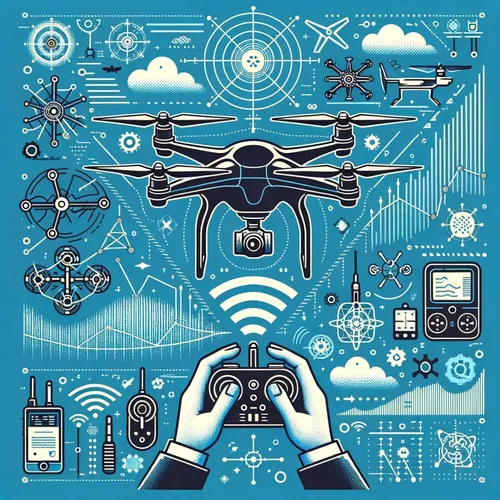Drones, Data, and Dollars: The Corporate Love Triangle Taking Flight!
- Author
- Quiet. Please
- Published
- Sat 26 Jul 2025
- Episode Link
- https://www.spreaker.com/episode/drones-data-and-dollars-the-corporate-love-triangle-taking-flight--67126332
This is you Commercial Drone Tech: Enterprise UAV Solutions podcast.
Enterprise drone technology is transforming industries by delivering efficiency, accuracy, and safety for large-scale operations. In construction, high-resolution aerial mapping and progress tracking are now standard, with major builders reporting survey times cut from days to hours and project rework costs dropping sharply. Agriculture harnesses drone-based multispectral imaging for precise crop health analysis and automated spraying, boosting yields while saving on labor and inputs as highlighted by research from the Association for Uncrewed Vehicle Systems International. The energy sector and infrastructure maintenance teams deploy drones for inspecting pipelines, power lines, and wind turbines, significantly reducing the need for hazardous manual labor and enabling early detection of critical faults thanks to real-time image analysis, according to recent industry case studies.
Drone fleet management is a foundational pillar for these enterprise applications. Modern cloud-based solutions, like DJI FlightHub 2 and VOTIX Manage, centralize mission planning, real-time supervision, and automated log keeping. For fleet managers juggling dozens or even hundreds of drones, platforms such as Aloft’s Air Control provide robust user management, standardized maintenance schedules, regulatory reporting, and integration with existing enterprise asset management systems. As described by Unmanned Systems Technology, automated checklists and permission workflows not only drive productivity but are essential for compliance—especially in high-risk sectors with strict oversight.
Security and regulatory compliance have never been more critical with growing concerns about cybersecurity and data privacy. Recent FAA directives and international standards now require remote identification and airspace authorization, pushing drone data software vendors to embed features like secure data transmission, detailed flight log retention, and access controls aligned with SOC2 and ISO27001. Several fleet management platforms also offer seamless integration with business analytics and geospatial systems, streamlining how drone-captured data feeds into project management, insurance, and maintenance workflows.
This week, a noted development includes Aloft’s announcement of expanded developer tools for programmatic fleet data integration, a step that should further bridge drones with enterprise resource planning software. Meanwhile, FlytBase rolled out new mission autonomy features, targeting infrastructure and energy users looking to scale up operations with minimal hands-on oversight. The global commercial drone market, according to recent Drone Industry Insights research, is on track to surpass 50 billion dollars by 2028, fueled largely by enterprise adoption in the sectors discussed.
Action items for businesses considering drones: evaluate use cases where remote sensing and automation can deliver measurable ROI, prioritize platforms offering end-to-end fleet and regulatory management, and plan for workforce upskilling to maximize both compliance and operational gains. Looking ahead, greater autonomy and AI-powered analytics will likely further reduce costs while expanding mission types and risk mitigation. Thanks for tuning in—come back next week for more on transformative business technology. This has been a Quiet Please production, and for me check out Quiet Please Dot A I.
For more http://www.quietplease.ai
Get the best deals https://amzn.to/3ODvOta
